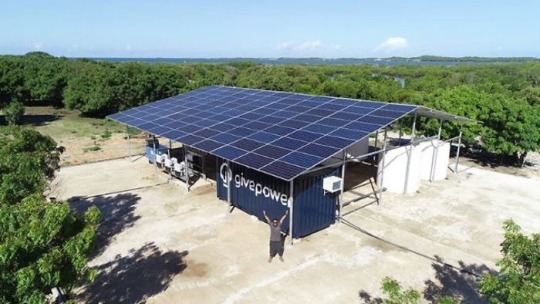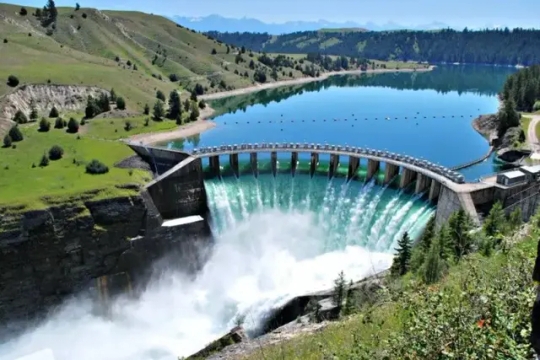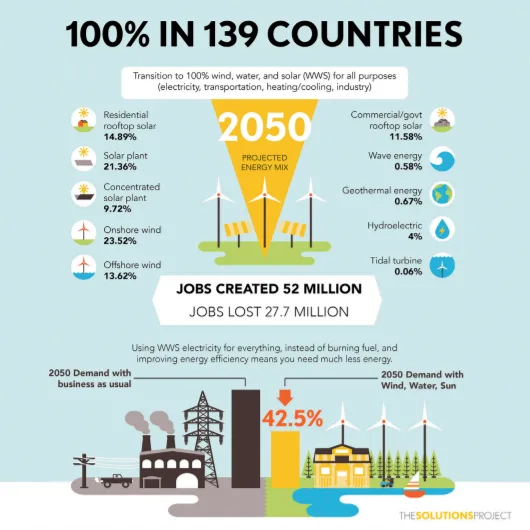#Solar Kenya
Text
Jubaili Bros at Solar Middle East: Pioneering Solar Solutions in the Heart of Innovation
The Middle East is not only a region known for its rich history but also a hub of innovation, growth, and opportunity. At Jubaili Bros, we are proud to be at the forefront of this transformative wave, and there's no better platform to showcase our commitment to sustainable energy solutions than the esteemed event, "Solar Middle East.
Jubaili Bros: Your Partner in Solar Excellence
As a pioneer in the power solutions industry, Jubaili Bros has been committed to delivering high-quality, efficient, and sustainable solar solutions to the Middle East and beyond. Our participation in Solar Middle East showcases our dedication to advancing solar energy adoption across the region:
Cutting-Edge Solutions: We offer a comprehensive range of solar energy solutions, from photovoltaic panels to advanced inverters and energy storage systems.
Quality Assurance: Our solar products are sourced from top manufacturers, ensuring that you receive high-quality, reliable equipment.
Customized Systems: Jubaili Bros specializes in designing and tailoring solar systems to meet specific energy needs, whether for residential, commercial, or industrial applications.
Expert Guidance: Our experienced team is on hand to guide you through the process of selecting, installing, and maintaining your solar systems.
Sustainability Commitment: Jubaili Bros is dedicated to promoting environmental sustainability through our solar solutions, aligning with global efforts to combat climate change.
🌍 Join Us at Solar Middle East
Solar Middle East is the perfect platform to engage with Jubaili Bros and explore the potential of solar energy in the Middle East. We welcome you to connect with us at this prestigious event and discover how we can empower you with sustainable, efficient, and reliable solar solutions.
Be a part of the solar energy transformation. Join Jubaili Bros at Solar Middle East and be inspired by the power of innovation and sustainability.
#Solar middle east#Solar Africa#Solar softwares#Solar panels#PV modules#Solar system#Lumax Mounting structure#PV inverters#Solar sudan#Solar Kenya#Solar
0 notes
Text
African poverty is partly a consequence of energy poverty. In every other continent the vast majority of people have access to electricity. In Africa 600m people, 43% of the total, cannot readily light their homes or charge their phones. And those who nominally have grid electricity find it as reliable as a Scottish summer. More than three-quarters of African firms experience outages; two-fifths say electricity is the main constraint on their business.
If other sub-Saharan African countries had enjoyed power as reliable as South Africa’s from 1995 to 2007, then the continent’s rate of real GDP growth per person would have been two percentage points higher, more than doubling the actual rate, according to one academic paper. Since then South Africa has also had erratic electricity. So-called “load-shedding” is probably the main reason why the economy has shrunk in four of the past eight quarters.
Solar power is increasingly seen as the solution. Last year Africa installed a record amount of photovoltaic (PV) capacity (though this still made up just 1% of the total added worldwide), notes the African Solar Industry Association (AFSIA), a trade group. Globally most solar PV is built by utilities, but in Africa 65% of new capacity over the past two years has come from large firms contracting directly with developers. These deals are part of a decentralised revolution that could be of huge benefit to African economies.
Ground zero for the revolution is South Africa. Last year saw a record number of blackouts imposed by Eskom, the state-run utility, whose dysfunctional coal-fired power stations regularly break down or operate at far below capacity. Fortunately, as load-shedding was peaking, the costs of solar systems were plummeting.
Between 2019 and 2023 the cost of panels fell by 15%, having already declined by almost 90% in the 2010s. Meanwhile battery storage systems now cost about half as much as five years ago. Industrial users pay 20-40% less per unit when buying electricity from private project developers than on the cheapest Eskom tariff.
In the past two calendar years the amount of solar capacity in South Africa rose from 2.8GW to 7.8GW, notes AFSIA, excluding that installed on the roofs of suburban homes. All together South Africa’s solar capacity could now be almost a fifth of that of Eskom’s coal-fired power stations (albeit those still have a higher “capacity factor”, or ability to produce electricity around the clock). The growth of solar is a key reason why there has been less load-shedding in 2024...
Over the past decade the number of startups providing “distributed renewable energy” (DRE) has grown at a clip. Industry estimates suggest that more than 400m Africans get electricity from solar home systems and that more than ten times as many “mini-grids”, most of which use solar, were built in 2016-20 than in the preceding five years. In Kenya DRE firms employ more than six times as many people as the largest utility. In Nigeria they have created almost as many jobs as the oil and gas industry.
“The future is an extremely distributed system to an extent that people haven’t fully grasped,” argues Matthew Tilleard of CrossBoundary Group, a firm whose customers range from large businesses to hitherto unconnected consumers. “It’s going to happen here in Africa first and most consequentially.”
Ignite, which operates in nine African countries, has products that include a basic panel that powers three light bulbs and a phone charger, as well as solar-powered irrigation pumps, stoves and internet routers, and industrial systems. Customers use mobile money to “unlock” a pay-as-you-go meter.
Yariv Cohen, Ignite’s CEO, reckons that the typical $3 per month spent by consumers is less than what they previously paid for kerosene and at phone-charging kiosks. He describes how farmers are more productive because they do not have to get home before dark and children are getting better test scores because they study under bulbs. One family in Rwanda used to keep their two cows in their house because they feared rustlers might come in the dark; now the cattle snooze al fresco under an outside lamp and the family gets more sleep.
...That is one eye-catching aspect of Africa’s solar revolution. But most of the continent is undergoing a more subtle—and significant—experiment in decentralised, commercially driven solar power. It is a trend that could both transform African economies and offer lessons to the rest of the world."
-via The Economist, June 18, 2024. Paragraph breaks added.
#one of the biggest stories of this century is going to be the story of the African Renaissance#I promise you#well preferably they'll come up with a non-European term for it lol#but trust me it WILL happen and it will be SO good to see#africa#south africa#nigeria#kenya#solar#solar power#solar panels#solar pv#energy#clean energy#poverty#electrification#distributed energy#electricity#infrastructure#hope#solarpunk#good news#solar age#<- making that a tag now
410 notes
·
View notes
Text
Twende Green Ecocycle, founded by Churchill Muriuki, Lawrence Kosgei, Zainab Mahmoud, and Faraj Ramadhan, is making waves by purchasing and collecting plastic waste from beaches and transforming it into affordable school desks and chairs.
Muriuki highlights the severity of the situation in Mombasa, where daily, over 80 tonnes of waste is generated, with plastic constituting 20% of this figure. A staggering 95% of this plastic finds its way into the ocean, posing a dire threat to marine biodiversity. The startup’s recycling process involves shredding the collected plastic, which is then washed, mixed with tetra pack waste, and compressed under high heat to create boards used for manufacturing the school furniture.

This ingenious solution not only alleviates the issue of plastic pollution but also ensures a more comfortable learning environment for students. Unlike traditional wooden desks, which are prone to chipping and often require students to share, the eco-friendly furniture provides each student with a comfortable and individual workspace.
https://twendegreen.co.ke/
#solarpunk#solarpunk business#solarpunk business models#solar punk#startup#reculture#africa#jua kali solarpunk#plastic waste#plastic#school furniture#kenya
29 notes
·
View notes
Text
Kenyan teacher adds recycling to the curriculum

“My passion for art inspired me as a teacher at Kingongo Primary in Nyeri to encourage young students to recycle waste material and make usable items at home and in school,”
source
#solarpunk#solar punk#africa#jua kali solarpunk#community#reculture#solarpunk aesthetic#informal economy#kenya
13 notes
·
View notes
Text
#good news#environmentalism#kenya#science#environment#africa#plastic#plastic pollution#upcycle#tech#solar power#green technology
19 notes
·
View notes
Text
Very glad to see this. 🌞
2 notes
·
View notes
Text

NBMN
Kenya Has Installed Its First Solar Powered Plant That Turns Ocean Water Into Drinking Water
#black diaspora news#black diaspora#kenya#water#solar power#solar panels#drinking water#africa#tech#potable water
1 note
·
View note
Text

📷 Myself, 2014.
0 notes
Text
The Mama Kitchen Garden Project: Transforming 24 Million Villages through Smart Farming
Discover how Kenya’s Mama Kitchen Garden Project is transforming rural communities through smart farming, empowering women and youth, and boosting food production.
Learn how the Kenyan government is promoting sustainable agriculture by leveraging technology, solar energy, and water management to develop 24 million kitchen gardens.
Explore the role of the Mama Kitchen Garden Project in…
#agriculture technology#bottom-up economic policy#climate change adaptation#crop diversification#food production#food security in Kenya.#Kitchen garden project#macadamia seedlings#Mama Kitchen Garden#smart farming in Kenya#solar energy in farming#sunflower farming#sustainable agriculture#water management in agriculture#women in agriculture#youth farming initiatives
0 notes
Text
Get the best assistance from leading Offgrid Solar Systems for installing cost-effective solar power systems! We offer the best solar solutions as per your needs and budget. For more information, you can visit our website https://voltmaticenergysolutions.co.ke/ or call us at +254759493610
0 notes
Text
Empowering Kenya: Solar System Installation Services Revolutionizing Energy Access.
Introduction to Solar Energy in Kenya
In Kenya, the adoption of solar energy has transformed the energy landscape, offering a sustainable and reliable alternative to traditional electricity sources. With abundant sunshine throughout the year, solar power has emerged as a key solution to meet the country's growing energy demands while reducing carbon emissions and promoting energy independence. This blog explores the importance of solar system installation services in Kenya and how they are making a significant impact on households, businesses, and communities.
The Benefits of Solar Energy
Switching to solar power brings numerous advantages to both consumers and the environment:
Cost Savings: Solar energy reduces electricity bills significantly over time, as it harnesses free sunlight to generate power once the initial installation costs are covered.
Environmental Impact: Solar power is clean and renewable, helping to reduce greenhouse gas emissions and combat climate change.
Energy Independence: Solar systems provide a reliable source of electricity, especially in rural and off-grid areas where access to the national grid is limited or unreliable.

Services Provided by Solar Installation Companies
Leading solar installation companies in Kenya offer comprehensive services to cater to diverse needs:
Site Assessment: Experienced technicians conduct thorough assessments to determine the solar potential of the site, considering factors like sunlight exposure, roof orientation, and energy consumption patterns.
Customized System Design: Using advanced software and industry expertise, solar companies design tailor-made solar PV systems that optimize energy production and efficiency based on the client's requirements.
Installation and Commissioning: Professional installers handle the entire installation process, ensuring safe and efficient system integration with existing electrical infrastructure.
Maintenance and Support: Ongoing maintenance services, including monitoring, cleaning, and repairs, ensure that solar systems operate at peak performance throughout their lifespan.
Applications of Solar Systems in Kenya
Solar energy installations serve a variety of purposes across different sectors:
Residential: Homeowners benefit from solar systems for powering homes, heating water, and running appliances, reducing reliance on grid electricity and lowering utility bills.
Commercial and Industrial: Businesses integrate solar power to reduce operating costs, enhance sustainability initiatives, and achieve energy efficiency goals.
Off-Grid Solutions: Remote communities and off-grid areas utilize solar energy to gain access to reliable electricity, improving living conditions and supporting economic development.

Government Support and Incentives
The Kenyan government actively supports solar energy adoption through policies and incentives:
Feed-in Tariffs: Favorable feed-in tariffs encourage private investment in large-scale solar projects, facilitating the integration of renewable energy into the national grid.
Tax Incentives: Tax breaks and exemptions on import duties for solar equipment reduce the initial investment costs, making solar installations more affordable for consumers and businesses.
Conclusion
In conclusion, solar system installation services Kenya play a crucial role in advancing sustainable development and expanding access to clean energy. By harnessing Kenya's abundant solar resources, individuals and businesses can contribute to environmental conservation efforts while enjoying reliable and affordable electricity. Explore the possibilities of solar energy today and join the movement towards a greener and more sustainable future for Kenya.
0 notes
Text
Countries That Generate 100% Renewable Energy Electricity

Pictured: Hydropower is the most widely used source of renewable energy-generated electricity. This dam is located near Polson, Montana.
Is 100% Renewable Resource-Generated Electricity Possible?
"With concerns growing regarding burning fossil fuels and their connection to global warming, a great debate is occurring regarding the feasibility of producing electricity entirely from non-carbon emitting green renewable energy sources such as geothermal, hydroelectric, wind, and solar. Skeptics and naysayers claim that achieving such a goal is impractical, would destroy the economy, and is in the realm of pie-in-the-sky thinking.
But is it actually impractical and unattainable? The answer is clearly "no" since there are already several countries that generate 100% of the electricity they use from renewable sources of energy. There are also many other countries that obtain over 90% of the electricity they use from renewable energy sources. Despite the negative rhetoric by some, there’s nothing impractical about using renewable energy to generate electricity on a grand scale.
The Countries Leading the Way to a 100% Renewable Energy Electricity Future
The following is a list of countries that are leading the world into the new frontier of economies that run their electrical grids either entirely or nearly entirely on renewable energy per a 2018 report by the International Renewable Energy Association (IREA) and the U.S. Energy Information Administration (EIA) statistics. This list and the percentages are subject to change over time, but it provides a good snapshot of just how practical renewable energy currently is for electricity generation.
Iceland obtains 100% of the electricity it needs from renewable energy sources. Iceland is somewhat unique since volcanic activity on the island provides a significant geothermal energy source that is utilized to provide approximately one-quarter of the country’s electricity. The remaining three quarters are provided by hydro-power.
Paraguay obtains 100% of the electricity it uses from renewable sources. Huge hydropower dams provide all of Paraguay's electricity needs, as well as supply neighboring Argentina and Brazil with electricity.
Costa Rica is another country leading the way towards 100% renewable-produced electricity. During 2018, Costa Rica met all of its electricity needs using renewable energy sources such as hydro-power, geothermal, biomass, wind, and solar for 300 days in a row.
Ethiopia, Kenya, Namibia, Norway, Tajikistan, and Uruguay are countries currently generating greater than 90% of the electricity they use from renewable energy sources. Some of these countries are working towards running their electric networks entirely from renewable energy.
Some things stand out from the list of countries leading the way in electricity generated from renewable energy.
They are relatively small countries.
They have abundant renewable natural resources, particularly abundant water resources available to generate hydro-power.
The list includes both wealthy developed and poor developing countries.
The fact that both developed wealthy countries and poor developing countries are leaders in renewable energy-produced electricity indicates that the cost of constructing renewable energy resources is not a limiting factor. In fact, developing countries can justify the capital cost of building renewable energy sources of electricity due to the fact that the operating costs are relatively low and predictable (not subject to commodity price swings), and renewable energy allows a country to be self-sufficient in meeting its electricity needs.
Large Developed Countries Can Also Produce 100% Of Their Electricity From Renewable Energy
Critics and naysayers might say that while these achievements by small countries are impressive, implementing renewable energy on a large scale is impractical for larger developed countries. But is it really impractical?
Cost and technological barriers are not what they once were for renewable energy. In fact, costs for renewable energy continue to decline year after year, and renewable energy technologies continue to develop and become more efficient. Many countries have not even come close to tapping their renewable energy potential or even tried some of the technologies available, such as electricity generated by wave or tidal power. Additionally, the argument that renewable energy is only useful when it is being generated is becoming irrelevant since large utility-scale batteries are now available that have the capability to store electricity generated by renewable energy and allow it to be used when needed.
Clearly, the answer is yes. Large developed countries can produce 100% of the electricity they need from renewable sources. It is only a matter of the will and investment at this point to make the changeover from fossil fuel-generated electricity to renewable energy electricity generation. The technical barriers are not as great as naysayers claim, as proven by smaller countries that have already reached the 100% threshold. Moving towards 100% renewable energy sources of electricity will become easier over time as wind, solar, and other renewables become more efficient and large utility-scale battery storage technologies become capable of storing larger quantities of energy for use when needed.

Pictured: Researchers lay out a plan for nearly 140 countries that could be powered 100 percent by renewable energy by 2050. spectrum.ieee.org
The City of Los Angeles Leads the Way in the U.S. With Inexpensive Solar
Various forms of renewable energy have experienced significant cost reductions to a point at which they are competitive and, in some cases, cheaper than traditional electrical energy sources such as coal, oil, and natural gas. This cost reduction trend will accelerate the change over to renewable sources of electricity. For example, the City of Los Angeles signed a deal in July 2019 for a large solar electricity array that will provide 7% of the city's electricity by 2025 at only two cents per kilowatt-hour (kWh). This is far cheaper than fossil fuel-derived electricity.
In addition to being cost-competitive, the practicality and reliability of renewable energy are poised to make major advances as large utility-scale battery technologies are rolled out that can be used to capture renewable energy when it is created, so the electricity can be used at a later time when needed. The Los Angeles solar array project includes utility-scale battery backup at a cost of 1.3 cents per kWh, so the electricity generated by the sun will be available even when the sun is not shining.
Los Angeles has a goal of achieving 100% renewable electricity generation by 2050. This solar contract is a big step toward achieving their goal."
-via TurboFuture, February 21, 2023
#renewables#renewablefuture#renewable energy#clean energy#green energy#solar power#solar panels#fossil fuels#climate crisis#climate change#global warming#hydropower#geothermal#wind power#wind turbines#iceland#paraguay#costa rica#ethiopia#kenya#namibia#norway#tajikistan#uruguay#united states#los angeles#battery#hope posting#hopepunk#sustainability
321 notes
·
View notes
Text
youtube
John Maguro’s story epitomizes a transformative journey. Born and raised in Central Kenya, Maguro’s ingenuity led him to develop a micro-hydroelectric power device, providing affordable and clean electricity to his community.
Starting with modest turbines, Maguro’s project has expanded to illuminate over 500 homes, local businesses, and schools, showcasing the potential of individual vision to drive off-grid progress and increase rural energy access.
#solarpunk#solarpunk business#solarpunk business models#solar punk#africa#jua kali solarpunk#renewable energy#kenya#Youtube
4 notes
·
View notes
Text

Esther Kimani, a computer programmer from Kenya, has won the UK’s Royal Academy of Engineering’s Africa Prize for Engineering Innovation. Her groundbreaking early crop pest and disease detection device wowed the judges, thanks to its remarkable ability to swiftly detect and identify agricultural pests and diseases. This innovative tool can reduce crop losses for smallholder farmers by up to 30% and boost yields by as much as 40%.
Harnessing the power of solar energy, the device employs computer vision algorithms and advanced machine learning to detect and identify crop pests, pathogens, or diseases, and the nature of the infection or infestation. Farmers receive notifications via SMS, making this an affordable alternative to traditional detection methods at just $3 per month—significantly cheaper than hiring drones or agricultural inspectors.
source
#solarpunk#solar punk#africa#ai#solarpower#agriculture#mobile tech#pest#solar power#solarpunk innovation#kenya#women#woman
15 notes
·
View notes
Text
Discover Top-Quality Power Generators for Sale at Colt Power

Looking for reliable power generators for sale? Colt Power offers a wide selection of high-performance generators to meet your power needs. Whether you need backup power for emergencies or a primary power source for your business, we have you covered. Explore our range of generators, built for durability and efficiency. Visit our website to find the perfect power generator for sale.
#aksa diesel generator#aksa power generater kenya#aksa generator spare parts#hybrid solar power system#hybrid power generation system
0 notes